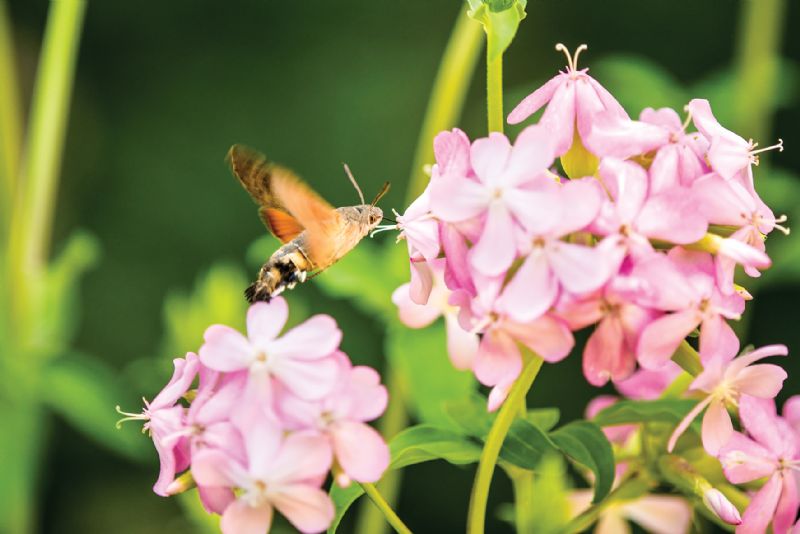- Home
- News, Articles & Reviews
We are hiring! Please click here to join our growing magazine delivery team in Gloucestershire!
Areas
Homes & Gardens
Archive

Attracting butterflies and moths
All Areas > Homes & Gardens > In the Garden
Author: Daniel Hoggins, Posted: Tuesday, 24th June 2025, 09:00
Summer in the garden wouldn’t be complete without the joyous sight of butterflies in flight, and there are loads of great ways to encourage more of them into your garden.
Few things are more rewarding for a gardener than seeing butterflies and moths fluttering around and feeding on our flowering plants. We get to appreciate the beauty of flowers and they get to enjoy the pollen and nectar. And while this in itself is a brilliant thing, what really helps the butterflies is not so much the flowers they feed on, but rather the plants their younger caterpillar incarnations hatch on and eat.
They only eat and lay on specific plants
They are rather picky about which plants they eat, though. Different varieties of caterpillar will only eat certain plants and so their parent butterflies will only lay their eggs on these specific plants.
If you’ve got the space to allow some nettles to grow in a rough patch of ground or wild area then you could be rewarded with the sight of Peacock butterflies, Commas, Small Tortoiseshells and Red Admirals, as their caterpillars like to feast on them.
Sweet woodruff is a lovely ground-covering plant that loves a shady area, and added as underplanting, is of great service to the caterpillars of the Hummingbird Hawk-moth, which looks amazing when hovering and feeding with a long proboscis, just like its namesake.
Comfrey produces beautiful pink and white flowers
Comfrey is a great low maintenance plant for a shady spot that produces beautiful pink and white flowers, which the zany looking Scarlet Tiger Moth chooses to lay its eggs on. You can try adding bird’s foot trefoil to your lawn or wild flower area to attract the charming Common Blue and Green Hairstreak butterflies.
Our native grasses are also invaluable and worth considering adding to a garden’s wilder areas where they can grow tall and uncut to be a home for caterpillars of Speckled Wood, Meadow Brown and Gatekeeper butterflies.
Continue to grow flowering plants
Of course, it’s still a really good idea to grow loads of flowering plants like buddleia, lavender and verbena to attract the adult butterflies in to feed on, but if you’ve got some of the plants they lay their eggs on too, then they’re more likely to stay on your side of the fence.
It is a gardener’s paradox that we love butterflies and hate caterpillars, but you really can’t have one without the other. The great thing about adding some of these extra plants to your garden is that they will not only help support more beautiful moths and butterflies, but also the plants in themselves are a delight.Other Images
Copyright © 2026 The Local Answer Limited.
Unauthorized use and/or duplication of this material without express and written permission from this site's author and/or owner is strictly prohibited. Excerpts and links may be used, provided that full and clear credit is given to The Local Answer Limited and thelocalanswer.co.uk with appropriate and specific direction to the original content.More articles you may be interested in...


© 2026 The Local Answer Limited - Registered in England and Wales - Company No. 06929408
Unit H, Churchill Industrial Estate, Churchill Road, Leckhampton, Cheltenham, GL53 7EG - VAT Registration No. 975613000You are leaving the TLA website...
You are now leaving the TLA website and are going to a website that is not operated by us. The Local Answer are not responsible for the content or availability of linked sites, and cannot accept liability if the linked site has been compromised and contains unsuitable images or other content. If you wish to proceed, please click the "Continue" button below:




